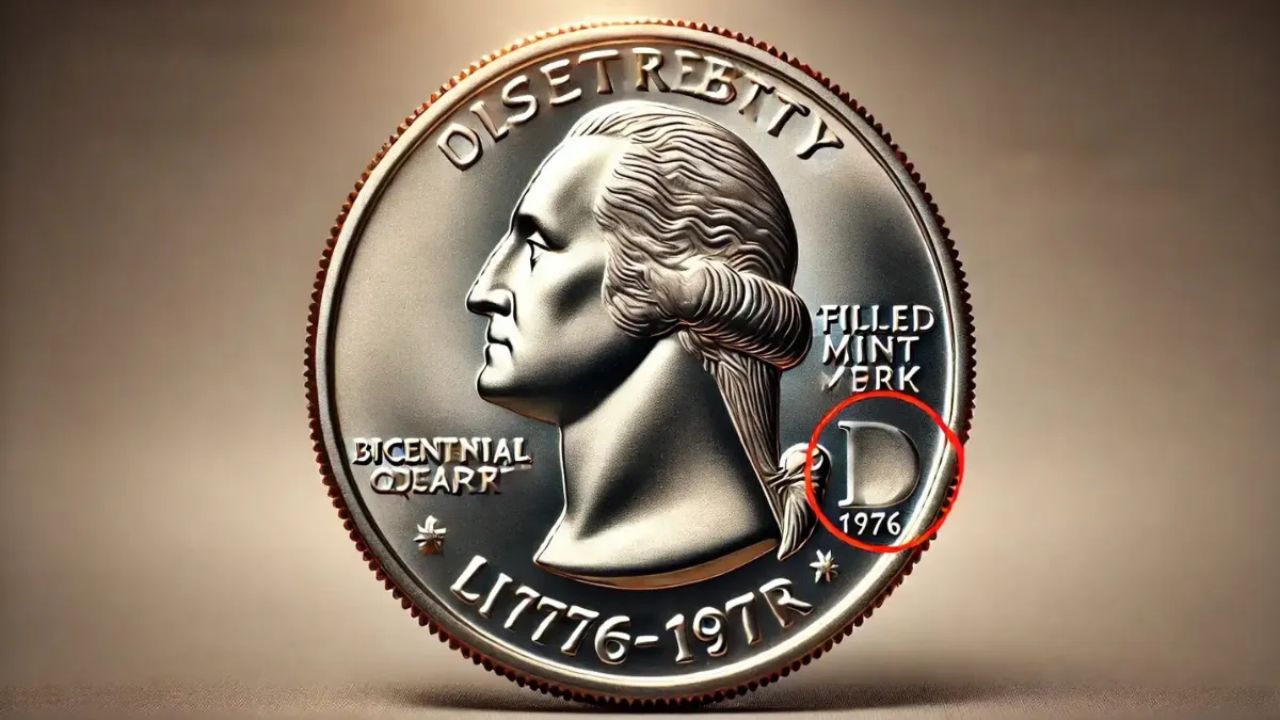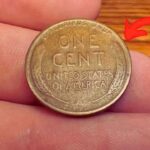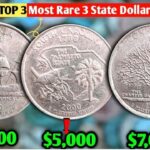Could a simple quarter from the 1970s really be worth more than a million dollars? Although it sounds too good to be true, certain rare types of the 1776-1976 Bicentennial Quarter have amazed coin collectors and could potentially change someone’s financial future.
The 1776-1976 Bicentennial Quarter was released to celebrate the 200th anniversary of American independence. While most of these quarters are only worth their face value of 25 cents, a few have unique errors or variations that make them incredibly rare and highly sought after by collectors.
Let’s dive into the fascinating history of this special coin, the rare errors that make it so valuable, and how much these quarters have sold for at auctions.
The Story Behind the 1776-1976 Bicentennial Quarter
In honor of America’s bicentennial, the U.S. Mint launched the 1776-1976 Bicentennial Quarter. Unlike standard quarters, this version features a Revolutionary War drummer and a torch surrounded by 13 stars, symbolizing the original colonies. Created by designer Jack Lahr, it also carries the dual date “1776–1976,” making it a standout among other coins.
Although more than 1.7 billion Bicentennial Quarters were minted, only a tiny fraction contain rare errors or striking differences. These unique coins have become prized treasures for collectors and can fetch jaw-dropping prices.
Rare Mint Errors That Boost Value
Coins with minting errors are especially appealing to collectors because of their rarity and uniqueness. Here are some of the most valuable errors found in the 1776-1976 Bicentennial Quarter:
✅ Double Die Errors (DDO & DDR)
This happens when the coin’s die is misaligned during production, causing a doubled image on the coin’s design. Doubling can appear on the words “LIBERTY,” “IN GOD WE TRUST,” or the dual date “1776–1976.” Well-preserved examples can sell for $2,000 to $5,000 or even more.
✅ Wrong Planchet Strikes
Some Bicentennial Quarters were accidentally struck on planchets meant for other coins, such as pennies or dimes. These off-metal strikes are incredibly rare, with values ranging from $10,000 to $25,000, especially if verified by top grading services like PCGS or NGC.
Also Read – $292–$1756 SNAP Benefits Coming in June & Memorial Day – See Exact Deposit Dates
✅ Missing Clad Layer or Split Planchets
Occasionally, the coin’s nickel layer may be missing, exposing the copper core. This reddish or copper-colored quarter can be worth between $2,000 and $10,000 or higher depending on its condition.
✅ Brockage Errors (Full and Mirror)
A brockage error occurs when a coin sticks to the die and leaves a mirror image on the next coin. Full brockage errors of the 1776-1976 Bicentennial Quarter can command prices of $15,000 to $50,000 at auction.
Record-Breaking Auction Prices
The most unique and rare 1776-1976 Bicentennial Quarters have made headlines at major auctions. Some of the most impressive sales include:
- Silver Proof Quarter with DDO: Sold for $13,500 in PR69 condition at Heritage Auctions.
- Quarter Struck on a 1-Cent Planchet: Certified by NGC, this rare coin sold for $25,000 in a private sale.
- Double Struck and 80% Off-Center: Auctioned in 2021 for $8,800.
- Full Brockage Error: Sold by Stack’s Bowers for an astonishing $40,000.
There are even rumors of an ultra-rare 1776-1976 Bicentennial Quarter with a unique combination of errors that could be worth over $1 million!
How to Identify a Rare 1776-1976 Bicentennial Quarter
If you think you might have a valuable Bicentennial Quarter in your possession, here’s what to check:
🔍 Weight: A standard quarter weighs 5.67 grams. Variations could indicate a rare error.
🔍 Color: A reddish tone may suggest a missing clad layer.
🔍 Design Features: Look closely for doubling, off-center prints, or unusual markings.
🔍 Mint Marks: Use a magnifier to check for missing or re-punched mint marks.
Uncovering Hidden Treasures
Many rare 1776-1976 Bicentennial Quarters are still out there. During the busy production period of the 1970s, some error coins slipped into circulation undetected. These valuable quarters could be hiding in old coin jars, drawers, or even your change purse!
What to Do If You Find One
If you discover a 1776-1976 Bicentennial Quarter that looks unusual:
✅ Don’t Clean It – Cleaning can lower its value.
✅ Weigh and Photograph It – Use a digital scale and take clear pictures.
✅ Get it Graded – Submit it to reputable grading companies like PCGS or NGC.
✅ Consult Experts – Reputable auction houses like Stack’s Bowers or Heritage Auctions can help you get the best value.
FAQs
Q: Are all 1776-1976 Bicentennial Quarters valuable?
No, most are worth face value, but rare errors and compositions can make them worth thousands.
Q: How can I tell if my quarter has an error?
Use a magnifier to spot unusual weight, color, doubling, or off-center prints.
Q: What’s the difference between regular and silver Bicentennial Quarters?
Silver versions were issued in collector sets and weigh slightly more.
Q: Where can I sell a rare 1776-1976 Bicentennial Quarter?
You can sell through trusted coin dealers, online marketplaces, or auction houses like Heritage or Stack’s Bowers.
Some Important Link
| Telegram Group | Click Here |
| WhatsApp Group | Click Here |
| Home Page | Click Here |










